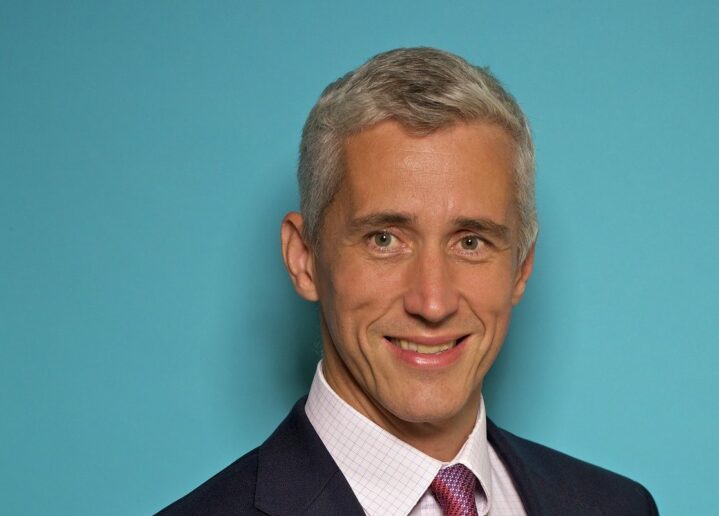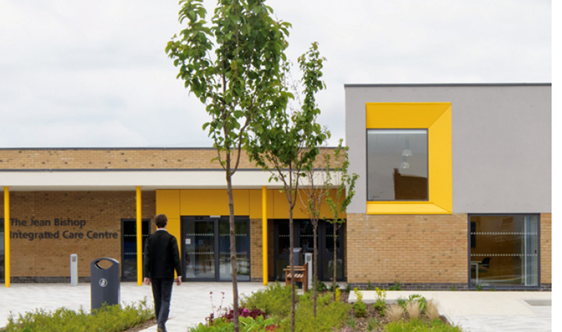We live in an age of market disruption: the search for the next great business opportunity, the discovery of a (usually tech) solution to a problem, and the opening of new markets.
Social and environmental factors are causing ill health. That is the problem of today, said Dr Pritpal Tamber at MIPIM 2019. So, what is the solution? Especially with regards to the built environment.
Dr Tamber was speaking at the MIPIM session, Healthcare: Preserving Health & Preventing Sickness. A medical doctor and a former Physician Editor at TEDMED, Dr Tamber now “bridges healthcare and communities”.
In his talk, he made the distinction between ‘healthcare’, which is looking after people who are ill, or unable to look after themselves; and ‘health’, which is defined differently by different people.
Access to high-quality healthcare accounts for a mere 20% of the state of our health, said Dr Tamber, quoting research by US physician J Michael McGinnis. The two determinant factors for good health are: economic security and education – learning how to process information, a skill generally taken on by the age of five, said Dr Tamber.
The healthcare sector, meanwhile – in particular for the elderly and those in need of assisted living – is one of the hottest alternative markets in real estate
In the UK, for example, returns on healthcare real estate averaged 10.9% in 2018, according to Knight Frank. Most real estate investors focus on the easy pickings at the high end of the market. The question remains as to how to approach the ‘middle’ market.
Place-based health produces healthy societies
The rise in the study of epigenetics – in short, the switching on and off of genes by biological mechanisms – has led scientists, and not just J Michael McGinnis, to redefine the factors that contribute to healthy living.
“We had assumed that every child got their DNA and started life with a clean slate,” said Dr Tamber. The reality is that “if you’ve grown up in an environment that has been bad for your health, you actually give that environment to your children through the epigenetic layer.”
Since the mid-2010s, new research revelations have given birth to the idea of ‘place-built’ health, such as in this year’s report Creating Healthy Places, by independent UK charity the King’s Fund.
“The places we live in affect our health in countless ways” – the King’s Fund, the UK
The report highlights: “The places we live in affect our health in countless ways, including through the way a neighbourhood is designed, access to green spaces and the provision of good public transport.
As a result, the public health sector – faced also by tight budgets and a demographic time bomb of elderlies – is switching focus from ‘healthcare’ to ‘health’.
However, being ‘healthy’ means different things to different people. For the medical and health professionals, it has generally been about eating better, getting more exercise and taking your meds, even though, said Dr Tamber, this is having little impact on health – as an example, just look at the explosion in cases of type 2 diabetes around the world.
“There needs to be a conversation with the people that we are trying to effect,” he said. For people interviewed in the streets of South London, Dr Tamber discovered that health was as varied as “doing what I want to do”, “a 360-degree way of being”, “having a sound body and mind” and “keeping up with competitors”.
The need for new ROI models for healthy communities
“The reality is that in healthcare the asset that you trade is sickness,” says Dr Tambar. “It’s only when someone is sick that you can actually make any money off them.”
“Existing ROI models prevent us from doing the things that we know we need to do” – Dr Pritpal Tamber
The fundamental issue is that there is no model for the ROI (return on investment) of place-based health, he added. “As a society, we need to start debating this, otherwise we’re trapped in existing ROI models that prevent us from doing the things that we know we need to do.”
Dr Tamber quoted the Healthy Neighbourhood Equity Fund in the US state of Massachusetts. The fund mixes three types of investment:
- Public money “not interested in a return”.
- Charity money “happy to get a return, but not holding the fund to account”.
- Commercial money.
The US$22mn fund has so far invested in eight urban projects. The fund’s aim is to transform neighbourhoods into healthy communities, and to create a new ROI model – one with factors such as lower healthcare costs, a healthier environment and increased real estate values.
How to create new, innovative approaches for healthcare
Healthcare infrastructure, including retirement living, accounts for 6.1% of the average institutional investor’s portfolio in the UK. This is set to rise to 9.5% by 2023, according to research by Octopus Real Estate, part of the Octopus Group.
Healthcare infrastructure accounts for 6.1% of the average institutional investor’s portfolio in the UK – Octopus Real Estate
The UK reflects markets across the developed world, with the number of people over 85 set to rise by 36% in the 20 years to 2035, quotes Octopus Real Estate.
As more and more investors enter the healthcare market, competition is increasing, calling for new, innovative approaches.
“There are a lot of redundant buildings in the healthcare estate” – Bob Wills, Medical Architecture
Bob Wills, Director of Medical Architecture in the UK, suggested that the answer lies in repurposing the public estate: “There are a lot of redundant buildings in the healthcare estate. It is about building a quality environment sufficiently flexible to be upgraded for climate change and easily adapted to different care models throughout its life.”
“It’s a complicated sector because you have to adapt to local regulations each time, even if the needs are the same” – Alessandro Sparaco, Threestones Capital Management
Alessandro Sparaco, Managing Director, Threestones Capital Management, pointed out that healthcare regulations, for facilities and buildings, vary from region to region in Europe. “It’s a complicated sector because you have to adapt to local regulations each time, even if the needs are the same,” he said. The common thread in the countries where Threestones operates – Germany, Italy and Spain – was that healthcare facilities needed investment to improve their efficiency.

Mike Adams, Chairman of Octopus Real Estate (above), which specialises in healthcare, said: “We’ve done what the private sector does well: spy opportunities. Over the last few years, the care sector has allowed for building high-quality assets, leased for 35 years, and which provide strong cash flows.”
It’s about providing the “right returns for the right type of investor, and feeding some of that capital back into innovative healthcare solutions” – Mike Adams, Octopus Real Estate
When it comes to the “middle ground”, said Adams, it is about connecting with the public sector. The “responsibility” of Octopus Real Estate, said Adams, was to take the sector a stage further and to partner with local authorities and NHS trusts so as to solve the issues behind place-based health.
“It’s all about how you finance the asset to produce a low-cost product” – Mike Adams, Octopus Real Estate
“There is a way forward,” Adams explained, “where we can provide the right returns for the right type of investor, and to feed some of that capital back into innovative healthcare solutions. It’s all about how you finance the asset to produce a low-cost product.”

Jean Bishop Integrated Care Centre – the ‘healthy’ way forward
As an example of how healthcare is moving towards ‘health’, and keeping people healthy, Wills of Medical Architecture cited the Jean Bishop Integrated Care Centre (above) in Hull, in the north of England, which opened last year.
The centre is designed to provide local treatment and help for the elderly so that they can carry on living in their own homes. Public resources are pooled in one integrated building. The work of the new adjoining fire & rescue station includes rescuing residents if they fall.
The centre, which has won several awards, was built on the land of a former school. The project also includes the construction of a small amount of affordable and market-priced housing. It was delivered under the LIFT (Local Improvement Finance Trust) public private partnership, under which the state retains a 40% stake in the company.
Reinventing the core away from healthcare and towards health
Taking a step back, and looking in from the outside, how we view health and healthcare within our built environment is about reinventing the core – away from healthcare and towards health.
It’s about staying one step ahead of the customer – the occupant, the resident. In short, it’s about disruption.
Top photo: monkeybusinessimages/Getty Images



